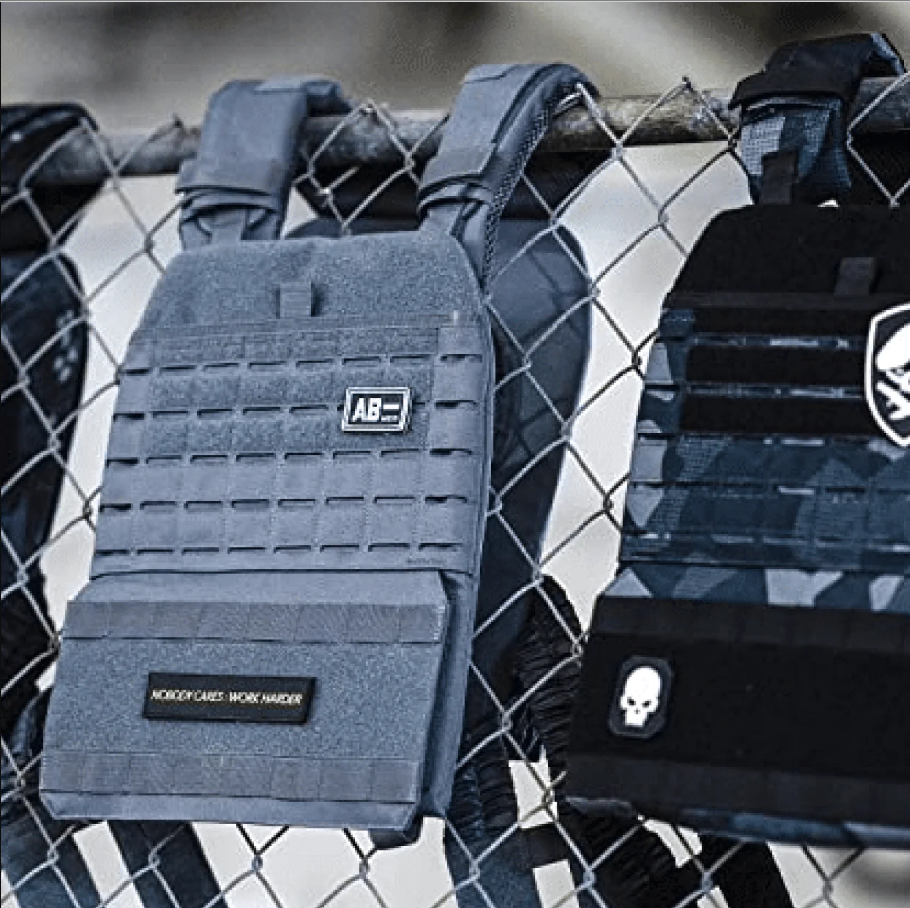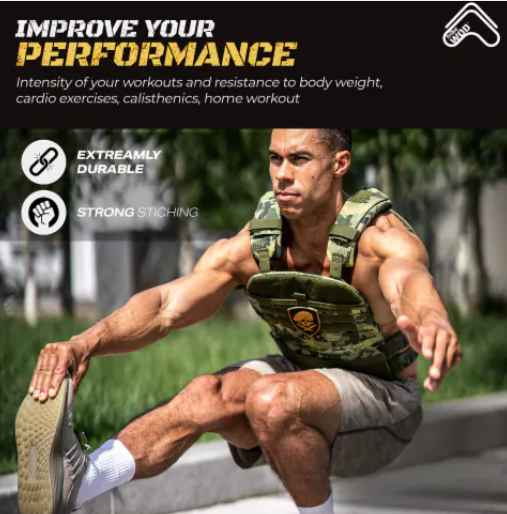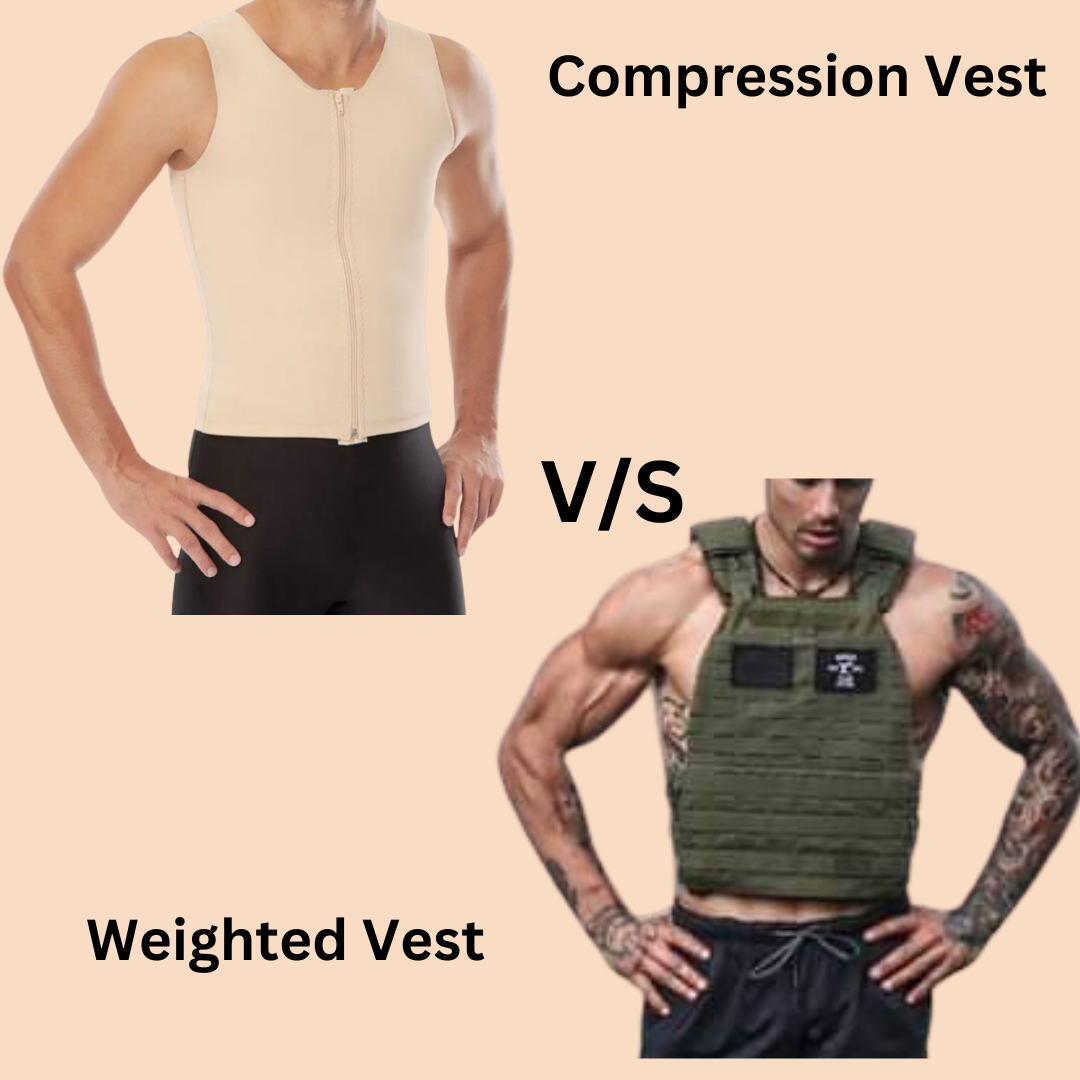Yes, a weighted vest can effectively work the shoulders. When performing exercises such as push-ups, shoulder presses, lateral raises, or any other upper body movements while wearing a weighted vest, the additional resistance challenges the shoulder muscles, including the deltoids, trapezius, and rotator cuff muscles. This added resistance forces the shoulder muscles to work harder to overcome the increased load, leading to greater muscle activation and strength development.
Shoulders are one of the most versatile and crucial joints in the body, facilitating a wide range of movements from lifting and pushing to reaching and throwing. Strengthening the shoulder muscles not only enhances upper body aesthetics but also improves overall functional fitness and reduces the risk of injury. While traditional weight training methods such as dumbbells, barbells, and resistance bands are commonly used to target the shoulders, incorporating a weighted vest into your training regimen can provide unique benefits and challenges. In this comprehensive guide, we'll explore how weighted vest training can effectively enhance shoulder strength, stability, and muscle development.
Topics Covered in this article
- 1.Understanding Shoulder Anatomy and Function
- 2.Benefits of Shoulder Strength Training
- 3.Introduction to Weighted Vest Training
- 4.Exercises to Strengthen Shoulders with a Weighted Vest
- 5.Safety Precautions and Tips for Effective Training
- 6.Incorporating Weighted Vest Training into Your Fitness Routine
- 7.Real-Life Applications and Functional Benefits
- 8.Conclusion
Understanding Shoulder Anatomy and Function
The shoulder complex comprises several muscles, tendons, and ligaments working together to facilitate a wide range of motion. The primary muscles involved in shoulder movement include the deltoids, rotator cuff muscles (supraspinatus, infraspinatus, teres minor, and subscapularis), and the trapezius. The deltoids, in particular, are responsible for the majority of shoulder movements, including abduction (lifting the arm away from the body), flexion (raising the arm forward), and extension (moving the arm backward).
Strengthening these muscles is essential not only for aesthetic purposes but also for enhancing shoulder stability and reducing the risk of injuries such as rotator cuff tears and shoulder impingement syndrome.
What muscles do weighted vests build?

Weighted vests primarily target the muscles of the upper body, including the shoulders, chest, back, and arms. However, they can also engage muscles throughout the entire body to varying degrees, depending on the exercise performed. Some of the key muscles that weighted vests can help build include:
-
Deltoids
-
Trapezius
-
Rotator Cuff Muscles
The rotator cuff muscles, including the supraspinatus, infraspinatus, teres minor, and subscapularis, are responsible for stabilizing the shoulder joint and facilitating smooth movement. While not directly targeted by weighted vests, these muscles are engaged to a certain extent during shoulder exercises performed with added resistance, helping to improve shoulder stability and reduce the risk of injury.
Overall, weighted vests can be an effective tool for building strength and muscle mass in the shoulders, as well as other upper body muscles, when incorporated into a well-rounded training program.
Benefits of Shoulder Strength Training
Improved Stability
Strong shoulder muscles provide a stable foundation for various upper body movements, enhancing overall functional fitness and athletic performance.
Injury Prevention
Strengthening the muscles surrounding the shoulder joint can help prevent common injuries such as rotator cuff tears, shoulder impingement, and instability.
Enhanced Posture
Strong shoulders contribute to better posture, reducing the risk of musculoskeletal imbalances and associated discomfort.
Increased Upper Body Strength
Developing shoulder strength translates to improved performance in exercises such as pressing movements (e.g., overhead press, bench press) and pulling movements (e.g., rows, pull-ups), leading to overall upper body strength gains.
Introduction to Weighted Vest Training
Weighted vests are versatile fitness tools designed to add resistance to bodyweight exercises and activities. Unlike traditional weightlifting equipment, weighted vests distribute weight evenly across the upper body, allowing for greater freedom of movement and versatility in exercise selection. By wearing a weighted vest during shoulder workouts, individuals can increase the intensity of their training, challenge their muscles in new ways, and promote greater strength and hypertrophy gains.
Exercises to Strengthen Shoulders with a Weighted Vest
Weighted Vest Push-Ups
How to do it
- Start in a plank position with hands shoulder-width apart and a weighted vest securely fastened.
- Lower your body towards the ground by bending your elbows, then push back up to the starting position.
Benefits
Targets the anterior deltoids, chest, and triceps while engaging core muscles for stability. Adding a weighted vest increases resistance, promoting greater muscle activation and strength gains.
Weighted Vest Shoulder Press
How to do it
- Stand tall with feet shoulder-width apart, holding a pair of dumbbells or kettlebells at shoulder height.
- Press the weights overhead until arms are fully extended, then lower back down with control.
Benefits
Targets the deltoid muscles while also engaging the triceps and upper back. Wearing a weighted vest adds additional resistance, intensifying the exercise and stimulating muscle growth.
Weighted Vest Lateral Raises
How to do it
- Stand with feet hip-width apart, arms by your sides, holding a pair of dumbbells or kettlebells.
- Lift the weights out to the sides until arms are parallel to the ground, then lower back down slowly.
Benefits
Isolates the lateral deltoids, enhancing shoulder width and definition. Incorporating a weighted vest increases the challenge, promoting greater muscle activation and strength development.
Safety Precautions and Tips for Effective Training
Start with a lighter weight
When incorporating a weighted vest into your shoulder workouts, begin with a lighter weight and gradually increase the load as your strength improves.
Focus on proper form
Maintain proper technique during exercises to reduce the risk of injury and maximize effectiveness. Avoid excessive swinging or momentum, and control the weight throughout each repetition.
Listen to your body
Pay attention to any signs of discomfort or strain, and adjust the weight or intensity accordingly. If you experience pain or discomfort, stop the exercise and consult a fitness professional or healthcare provider.
Warm-up and cool down
Prioritize a thorough warm-up before starting your weighted vest workouts to prepare your muscles and joints for exercise. Incorporate dynamic stretches and mobility drills to increase blood flow and flexibility. After your workout, perform static stretches to improve flexibility and promote recovery.
Incorporating Weighted Vest Training into Your Fitness Routine
Choose the right vest
Select a weighted vest that fits comfortably and securely, allowing for freedom of movement during exercise. Consider factors such as weight capacity, adjustability, and padding for optimal comfort and performance.
Gradually increase the weight
As you progress in your training, gradually increase the weight of the vest to continue challenging your muscles and promoting strength gains. Aim for progressive overload by adding small increments of weight over time.
Mix up your exercises
Incorporate a variety of shoulder exercises into your weighted vest workouts to target different muscle groups and prevent plateaus. Experiment with different rep ranges, tempos, and exercise variations to keep your workouts engaging and effective.
Monitor your progress
Keep track of your workouts, including the weight used, sets, and repetitions performed. Regularly reassess your strength and adjust your training program accordingly to continue making progress towards your goals.
Real-Life Applications and Functional Benefits
Improved posture and alignment
Strengthening the shoulder muscles can help correct imbalances and alignment issues, leading to better posture and reduced risk of injury in daily activities.
Enhanced athletic performance
Strong shoulders are essential for optimal performance in sports and physical activities, including throwing, swinging, and lifting. By incorporating weighted vest training into your routine, you can improve shoulder strength, power, and endurance, translating to better athletic performance and reduced risk of injury.
Functional fitness and daily activities
Strong shoulders are vital for performing everyday tasks such as lifting groceries, carrying bags, and reaching overhead. By enhancing shoulder strength and stability through weighted vest training, you can improve your ability to perform these activities safely and efficiently, enhancing overall quality of life.
Conclusion
In conclusion, weighted vest training is a highly effective and versatile method for enhancing shoulder strength, stability, and muscle development. By adding resistance to exercises targeting the shoulders, individuals can increase the intensity of their workouts, challenge their muscles in new ways, and promote greater strength gains. Understanding the anatomy and function of the shoulder complex is essential for designing effective training programs that prioritise proper form and safety.
By incorporating exercises such as push-ups, shoulder presses, and lateral raises with a weighted vest, individuals can increase the intensity of their workouts, challenge their muscles in new ways, and achieve greater strength gains. However, it's essential to prioritise safety, proper form, and gradual progression when integrating weighted vest training into your fitness routine.
By consistently challenging the shoulder muscles with weighted vest exercises and monitoring progress over time, individuals can unlock the full potential of their shoulders and achieve their strength and fitness goals. With dedication, consistency, and smart training strategies, anyone can enhance their shoulder strength and enjoy the benefits of a stronger, more resilient upper body.










